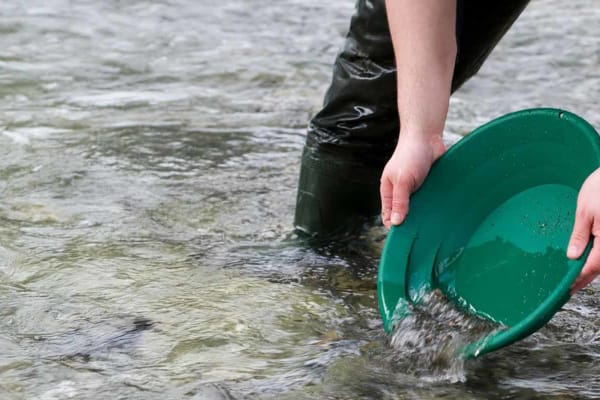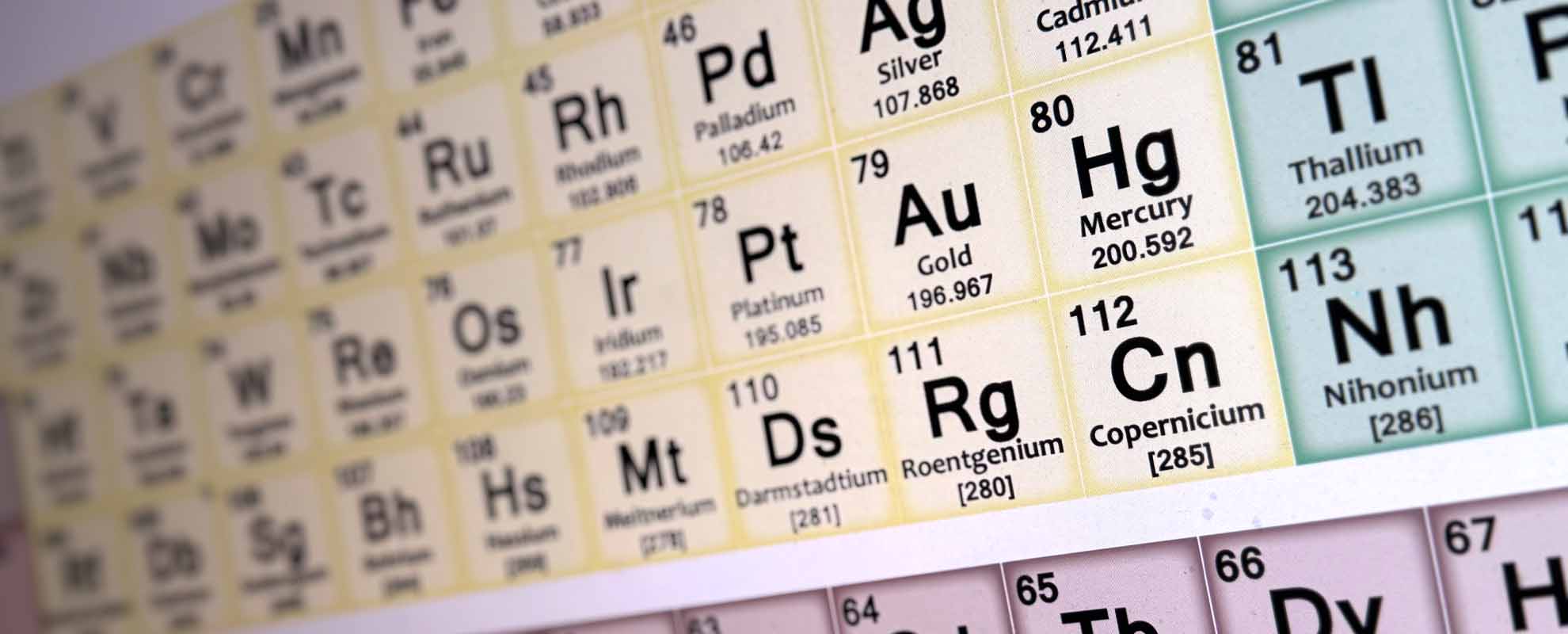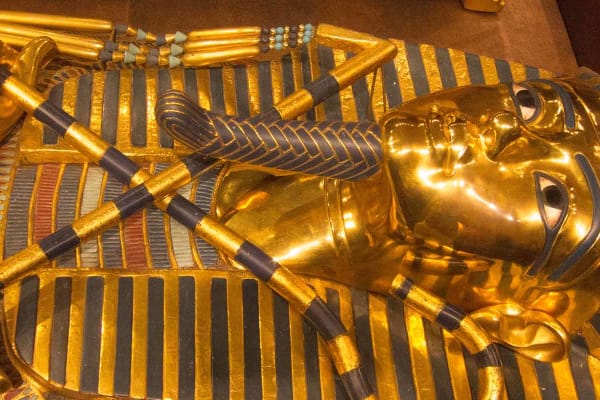
Is There Gold In Cornwall?
Uncover the truth behind Cornwall's elusive gold - its ancient origins, rare discoveries, and the future of sustainable mining in Britain's historic heartland.

Antimony is a metal used along with alloys to create batteries for storing grid power. It is silvery grey and uncommonly found in its pure form in nature.
Antimony : Characteristics, nuclear data and photo.
Asbestos has an unsavoury reputation for causing cancer in people who work around it. It is a fibrous mineral with incredible fire retarding properties. Although asbestos has a bad reputation, it becomes the well-known and popular 'Tiger Eye' stone when polished.
Asbestos : Answers to the most frequently asked questions.
Barium is a soft, white metallic element that is alkaline. It is commonly used in X-ray technology, fireworks, rubber and glass making, and rat poison.
Barium : Historical data, properties and other information about this element.
Bauxite is a sedimentary rock that is an important ore of aluminium. Its aluminium content is leeched from the soil above.
Bauxite : Photos and usage information.
Beryllium is a highly toxic alkaline metallic element. It is known for its sugary sweet taste, and some of its common uses are in X-rays and fluorescent lights.
Beryllium : A very thorough and technical site about this mineral.
Chromite is the ore of chromium and is a very hard metal; diamond is the only thing harder. This hardness allows a chrome finish to take a high polish.
Chromite : This site talks about its history and characteristics.
Cobalt is famous for the incredible blue colour it imparts to glass and pigment. It has been found in meteorites and is used in invisible ink. It is a brittle metal and resembles iron.
Cobalt : This site has photos, video, charts and physical and atomic descriptions.
The columbite-tantalite group is a mineral used widely in technology. Electronics, automotive systems, and health products like pacemakers need this mineral to operate. It is mined in Africa and has earned the name Coltan over the last few years.
Columbite-tantalite : Information about its role in the world under the name 'Coltan'.
Copper is a common metal throughout the world. It is used for currency, jewellery, plumbing, and to conduct electricity. It is a soft, orange-red metal.
Copper : This site talks about its properties, uses and makeup.
Feldspar is the most common mineral on Earth. It is most commonly found in granite and is used mostly as a building material.
Feldspar : Characteristics of the two types of feldspar.
Fluorite (fluorspar) is commonly used to create fluorescent pigment. It is also used as gem material because of its beauty. It is mined all over the world.
Flourite : This site talks about its uses and gem qualities.
Most people are familiar with gold, which is used for jewellery, dentistry, electronics, and a host of other applications. Gold is also the most malleable metal, which increases its versatility.
Gold : The uses, forms and photos of gold.
Gypsum is a very soft mineral with a variety of uses, most commonly in drywall, also known as sheet rock. It is also used as a fertiliser and road construction.
Gypsum : How gypsum is relevant to everyday life.
Halite (sodium chloride--salt) is used for seasoning food and softening water. It is also used to make certain acids in fire extinguishers and melting ice on the road.
Halite : Photos and habits of halite.
Iron Ore is perhaps as important to civilization today as gold historically. It is used in all sorts of construction, from vehicles to buildings.
Iron Ore : History of its mining and importance in the United States.
Lead has a bad reputation for its poisoning capabilities, some of which may have been exaggerated by fear. It cannot be absorbed by the skin or breathing, but it is harmful if it touches food or drink. It was at one time used in paint, pencils and eating utensils.
Lead : The chemical makeup and uses of lead.
Lithium is used in several applications, including medication for bipolar symptoms and batteries. Lithium has become very popular with the advent of electric cars.
Lithium : This site shares the properties of lithium.
Manganese with iron impurities can be slightly magnetic. It is essential in the steel-making process, and petroglyphs were carved into it in the Southwest.
Manganese : A profile of Manganese and its uses.
Mica is the mineral responsible for putting a sparkle on many rocks. This mineral is very flexible, and large sheets of it were used as window glass in the past.
Mica : History, uses and characteristics.
Molybdenum is essential for supporting all life forms because it is essential for utilizing nitrogen.
Molybdenum : Uses and signs of toxicity.
Nickel is a common metal in everyday life. It has been used in currency, jewellery and eating utensils and is used in alloys as well.
Nickel : This site has photos of nickel-bearing meteorites and other information.
Perlite is created from volcanic rock. It is a lightweight substance with great water-bearing characteristics. It is the white stuff found in some potting soils.
Perlite : Historical information and hydroponic usage.
Platinum Group Metals (PGM) are rare and therefore expensive. They are commonly used in jewellery, but technology also benefits from them. The largest source of platinum and the members of its family is from the by-product of nickel mines.
Platinum : Uses and other detailed information.
Phosphate is necessary for all life on earth
Phosphate : The cycle of Phosphate.
Potash is the old-fashioned term for Potassium. Potassium is a major component in crop fertilisers around the world. It is very important in the human body since it works with salt, regulating the pressure inside and outside the body’s cell walls. It is also used in soap manufacture.
Potash : and its major uses.
Pyrite is commonly known as 'fools gold'. It is frequently seen in granite rocks where it adds sparkle. Native Americans polished it to use as a mirror, and it is occasionally used in jewellery. Its byproduct is used in ink and disinfectants.
What is Fool's Gold made of?
How to tell Fool's Gold from real gold
Pyrite : Its uses, history and gem qualities.
Quartz (silica) is the most abundant mineral on earth. It is the name for a large family of rocks, including the jaspers, agates, onyxes and flints. Quartz is used in concrete, glass, scientific instruments and watches. Most importantly, today, it is used to make silicon semiconductors.
Quartz : Its uses, chemical makeup and photos.
Rare Earth Elements (lanthanum, cerium, praseodymium, neodymium, promethium, samarium, europium, gadolinium, terbium, dysprosium, holmium, erbium, thulium ytterbium and lutetium) Many of these are used to create nuclear power.
REMs : Technical data on these elements.
Silica is used in desiccants to remove moisture from the air. It is also used to make sandpaper and glass.
Silica : Information and uses of silica.
Silver is a precious metal. It is used as currency and in jewellery making. Due to its antimicrobial properties, it is also used in medicine.
Silver as an anti microbial.
Sodium Carbonate (soda ash or trona) controls the pH of products. It is also used to make glass, paper, detergents, and softening agents.
Sodium Carbonate : Technical and usage data.
Stibnite is a major ore of antimony used in fireworks, rubber, and glass making. It is mainly mined in Romania.
Stibnite : Basic information for this ore.
Sulfur is one of the only minerals found in its pure form in nature. It is a major ingredient in acid rain and is also used in wine making and fruit preservation.
Sulphur : Basic information and photos of sulfur.
Tantalum is used when an alloy needs a high melting point and strength. It is used in missiles, aircraft parts and vacuums.
Tantalum : Chemical and usage information
Titanium is one of the most abundant and toughest metals on Earth. It is used extensively in human body repair.
Titanium : Uses and other information about titanium.
Tungsten is a metal that is stronger than steel and a high melting temperature. It is also used to make saw blades and used in welding.
Tungsten and the invention of the light bulb.
Uranium is a highly radioactive element. It is used in cancer treatments, X-rays, military weapons, and space shuttle fuel.
Uranium : Facts, characteristics and uses.
Vanadium is found in many foods and helps bones grow. It is useful in regulating blood sugar in diabetics and helps grow muscles for bodybuilders.
Vanadium and its medical uses.
Zeolite is known as the ‘stone that dances’. It is used in wastewater cleanup, and since it can absorb ammonia, it is used in kitty litter and to reduce other animal smells.
Zeolites : Basic information about zeolites.
Zinc is essential for a healthy life. A zinc deficiency can cause rashes, diarrhea, impaired taste, and eye problems. It is also used to treat macular degeneration, diabetes, and the common cold.
Zinc biological and scientific information.

Uncover the truth behind Cornwall's elusive gold - its ancient origins, rare discoveries, and the future of sustainable mining in Britain's historic heartland.

A Guide to Primary and Secondary Deposits

Ancient Egypt can be categorised into different periods depending on the dynasty which was ruling the country.